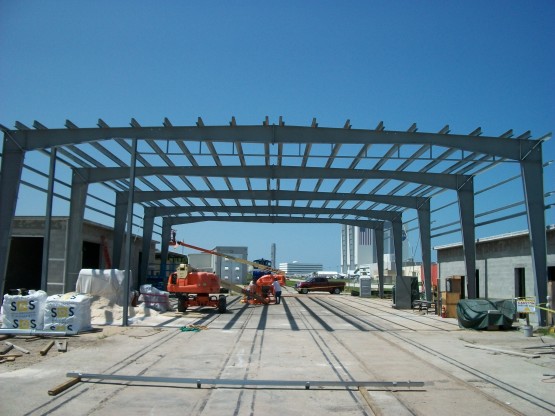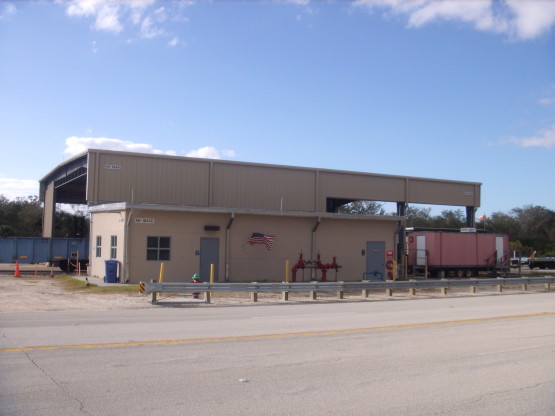he NASA Railroad System was put into use in 1963 once the Florida East Coast Railway added a 7.5 mile connection from its mainline across the Indian River Lagoon. Its primary use at that time was for the transport of heavy building materials for the construction of facilities such as the Vehicle Assembly Building (VAB) in support of the newly chartered Apollo Program, a program that would eventually change the face of all space travel and human history.
The use of the rail system didn’t end at transporting building materials. The rail system became an integral part of moving various space flight vehicles and equipment to different launch sites at Cape Canaveral Air Force Station and NASA. Once the Apollo program was phased out and the Space Shuttle Program was chartered, the NASA Rail System took on another role; it became the delivery and transport system of the Solid Rocket Boosters used to get the Space Shuttle into orbit. The boosters were assembled by Thiokol across the country in Utah and shipped via rail in sections. After a seven day journey the sections of the boosters would arrive at the Jay Jay rail yard exchange in North Titusville. From there the NASA Locomotive team transported the sections over the Indian River across the Jay Jay Bridge to their assembly point.
Needless to say, parts of the rail system have become aged and worn in their 40 plus years of service. One of those facilities is the Locomotive Shelter located just down the street from the VAB. The Locomotive shelter is just one of many invaluable parts of the NASA Rail System. In 2009, it was determined that the locomotive shelter needed a make over. NASA contracted with CDE to come up with a design to refurbish and restore the aging facility.
CDE’s solution entailed designing and replacing the pre-engineering metal building skin (roof and siding) with aluminum panels to meet current wind loads, replacing all purlins and girts with new corrosion resistant sections, perform corrosion control on the pre-engineering metal building frame, and construct a brand new office building for the locomotive shop staff. The new facility features office spaces, break rooms, locker rooms, toilets with shower, and a mechanical room. In addition to that, CDE provided site design that included site surveying, grading, storm water, new utilities (water, fire water, sewer, communion and power) to the new and existing facility. CDE also designed and constructed a new on-site storage building.




